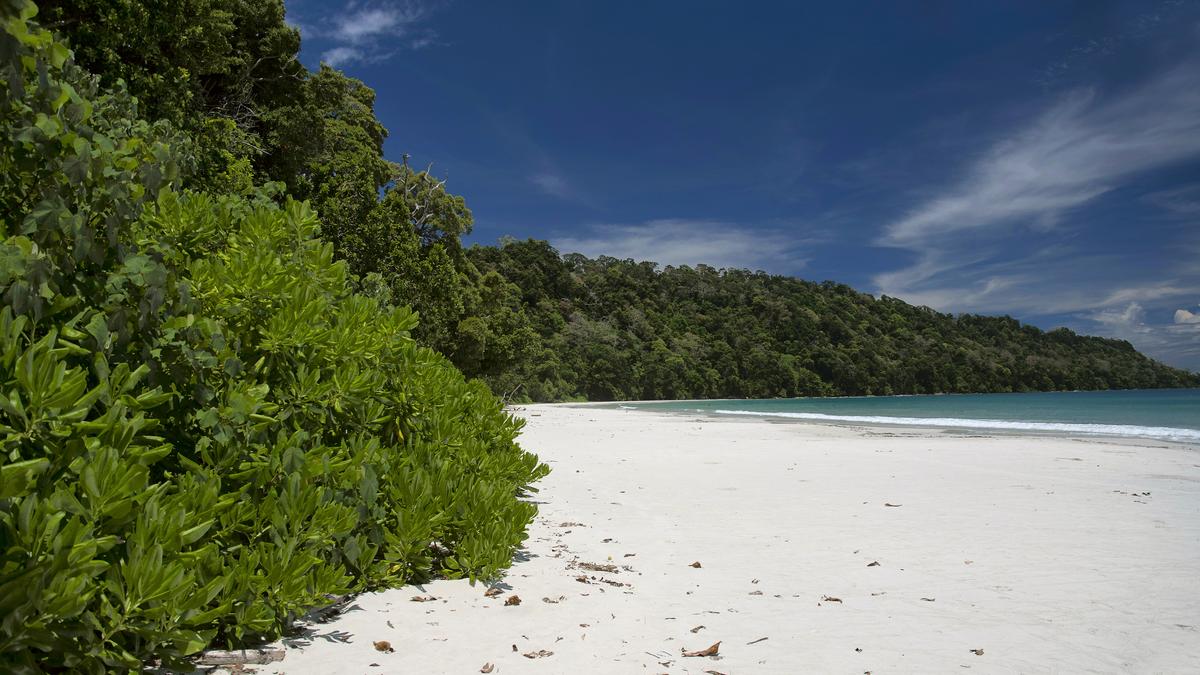‘Unfortunately, the development trajectory of the Andaman and Nicobar Islands has been largely influenced by mainland India which has often been far removed from the needs of an island ecology’
| Photo Credit: Getty Images/iStockphoto
From an ecological point of view, the Andaman and Nicobar Islands can be easily rated as one of the world’s most major biological diversity hotspots, acting as a global carbon reservoir and climate regulator. Unfortunately, the development trajectory of the Andaman and Nicobar Islands has been largely influenced by mainland India which has often been far removed from the needs of an island ecology. The issue in focus now is the Government of India’s multi-crore mega-plan for the Great Nicobar Island — the construction of a power plant, township, transshipment port and airport, which will also affect 13,000 hectares of pristine forests.
Essential judicial precedent
A landmark judgment relating to the issue of diversion of forests that could come to the rescue of the Great Nicobar Island is the Niyamgiri Hills case, pursuant to the Scheduled Tribes and Other Traditional Forest Dwellers (Recognition of Forest Rights) Act, 2006.
In its 2013 judgment, in Orissa Mining Corporation Ltd. vs Ministry Of Environment & Forest and Ors., the Supreme Court of India addressed the concerns of the Dongoria Kondh tribe who resisted plans for bauxite mining in the sacred Niyamgiri Hills of Odisha. Following protests by the tribes in the region against mining which threatened their culture, religion and environment, the Court ordered a referendum in the affected gram sabhas, which unanimously voted against the project. The Court upheld the competence of the gram sabha to safeguard and preserve the traditions of the community, their cultural identity, community resources and community modes of dispute resolution.
In light of this judgment, the pertinent questions with respect to the proposed project on the Great Nicobar Island include whether the Tribal Council of Little and Great Nicobar has been allowed to exercise its competence in certifying the settlement of forest rights under the Forest Rights Act before the decision to divert forest land. A report in this daily, “Forest rights of tribal people were not settled for Nicobar project: council” (August 23, 2025), has highlighted how the Tribal Council had said that the Andaman and Nicobar Islands Administration had made a false representation to the Centre by claiming that rights of the tribal people under the Forest Rights Act had been identified and settled before diverting the required forest land for the project.
Granting rights to nature in India
What is being witnessed in the Great Nicobar is not new but one more example of how big multipurpose projects are on track to be planned disasters. The examples are many — from Tehri in the north to Koel Karo in the east to Sardar Sarovar in the west. To respond to a consistent failure of environmental law in protecting ecology, several countries (Bolivia, Colombia, Ecuador and New Zealand) have adopted a new legal approach called ‘earth jurisprudence’ or ‘rights of nature’ which grants rights to non-human natural entities (rivers, forests, mountains, and various ecosystems), recognising them as subjects of rights holders.
This approach drew inspiration from an influential article written by Christopher Stone in 1972 — ‘Should Trees Have Standing? – Toward Legal Rights For Natural Objects’. He argued that the current approach did not consider damages to the environment, but only environment-related damages to humans in granting relief.
Second, such relief did not go to the natural entity but only to affected human beings. He said that making natural entities as right holders, by vesting them with legal standing in court and making them the direct beneficiaries of legal redress, would improve the environment. But the question arises whether natural entities, like human adults, be held legally responsible and exercise legal competences by entering into contracts or whether they can sue and be sued by an aggrieved party. Stone suggested the creation of a guardianship body which could initiate legal action and also collect funds to preserve and restore its condition.
The groundbreaking turn towards recognising the rights of natural entities happened in India in 2017 when the Uttarakhand High Court granted legal personhood to the Ganges and Yamuna rivers, as well as the Gangotri and Yamunotri glaciers. The judgment, in Mohd. Salim vs State of Uttarakhand and Others, conferred these entities with rights and obligations but only through a designated person. Although the Supreme Court stayed the ruling of the High Court, some of the elements in the High Court judgment, especially the idea of conferring guardianship responsibilities on behalf of those natural entities, could be a signpost for designing legal personhood.
The case in Colombia as guidance
Pushing the boundary of the Forest Rights Act further to incorporate the idea of granting legal personhood is one such option. Still, the idea of granting legal personhood to natural entities will require the building of greater clarity on the specific legal rights and the responsibility of individuals charged with upholding them. An in-depth study of important normative questions such as how to define rights bearing nature, what rights to recognise, who can speak for nature, and whether someone should be responsible for protecting nature, is required.
In finding answers to these normative questions, there is guidance from Colombia’s Atrato River case (2016), which recognised bio-cultural rights — a reference to the right of ethnic communities to autonomously administer and protect their territories as well as the natural resources that constitute their habitat. The formation of a commission of guardians requires the inclusion of representatives from the indigenous people facing the destruction of their habitat.
Anwar Sadat teaches international environmental law at the Indian Society of International Law, New Delhi
Published – October 13, 2025 12:08 am IST

